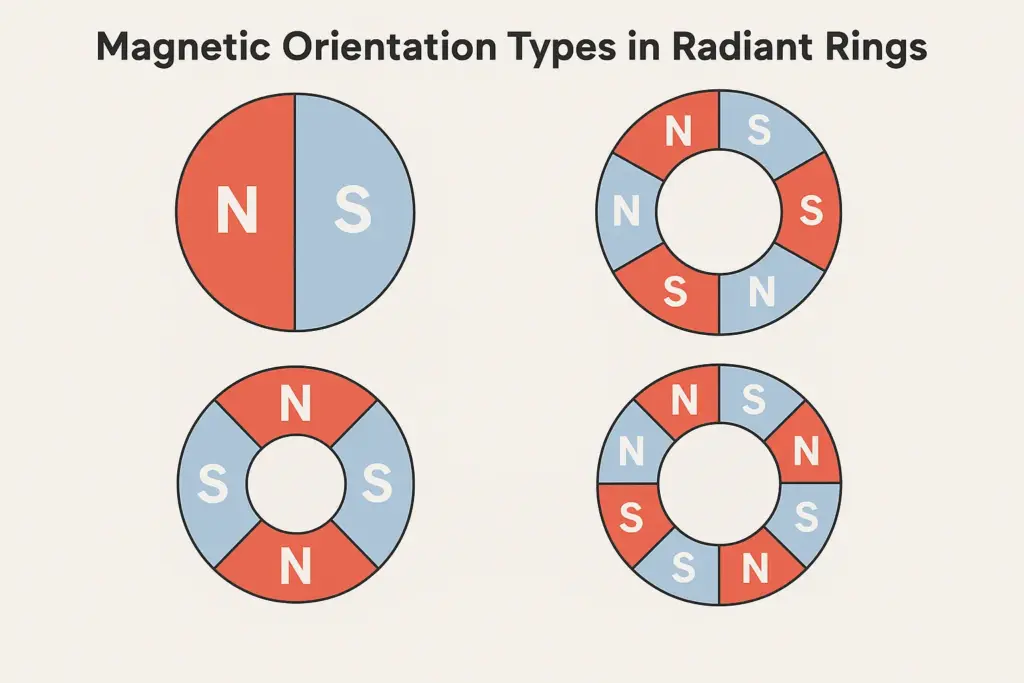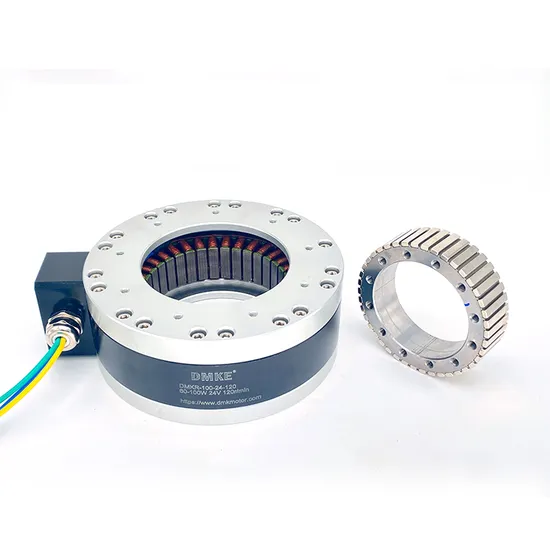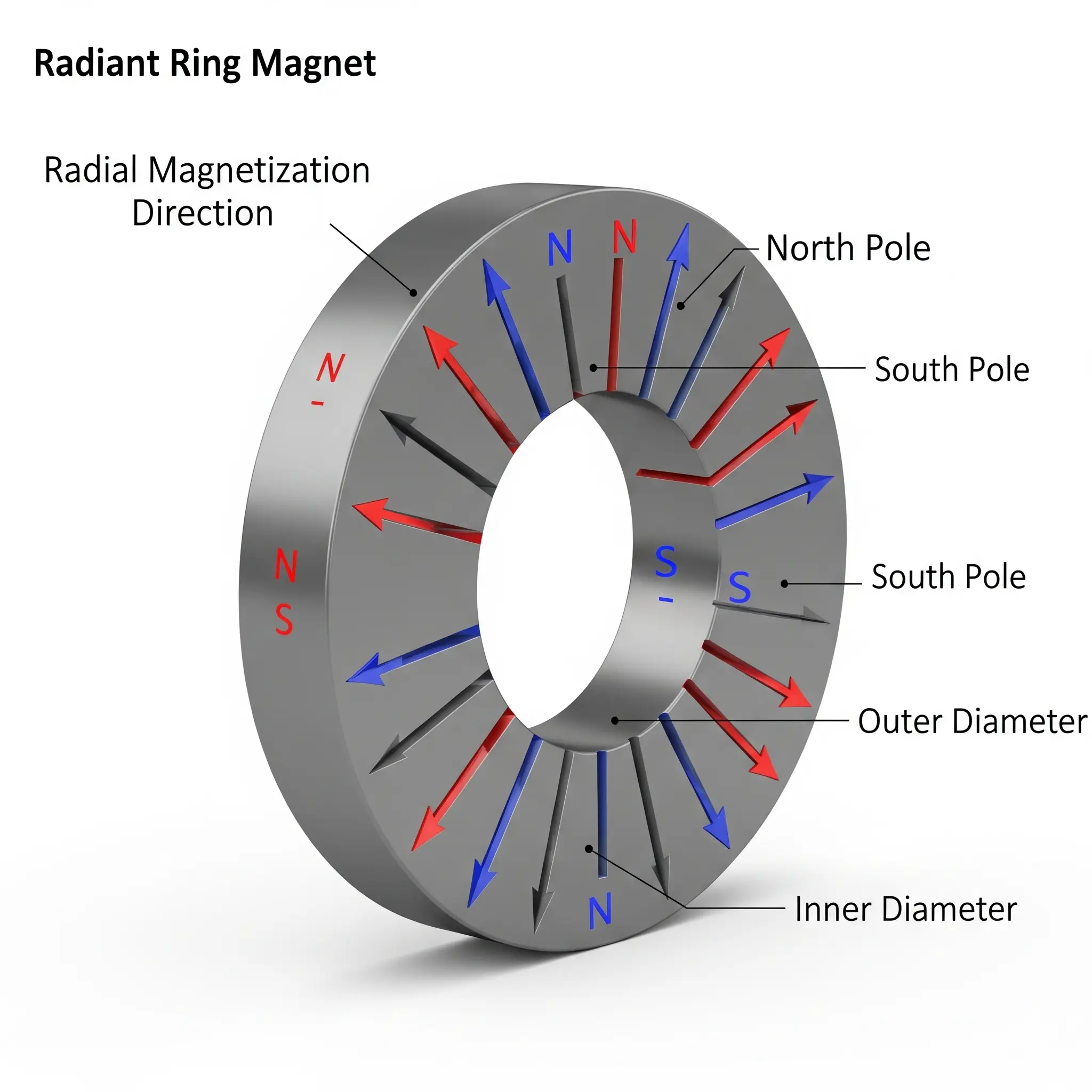A radiant ring magnet is a special type of circular permanent magnet that is magnetized radially along its circumference—meaning the magnetic poles are distributed outward (or inward) like spokes on a wheel, rather than through the length or thickness of the magnet. This distinctive magnetization pattern allows for highly efficient rotational magnetic fields and unique functional benefits in certain applications.
How Radiant Ring Magnets Are Made
The production of a radiant ring depends largely on the magnetic material type and its magnetic anisotropy.
1. Isotropic Magnetic Materials
Isotropic materials, such as AlNiCo 2 or isotropic bonded neodymium magnets, can be magnetized in any direction after forming. This makes them ideal for producing radiant ring magnets, since the magnetization can be applied radially in the final step.
- Advantages: Flexible magnetization directions, simpler tooling, lower cost for small batches.
- Examples: AlNiCo 2 rings for instrumentation, bonded NdFeB for motors and encoders.
2. Anisotropic Magnetic Materials
Anisotropic materials, such as sintered NdFeB or ferrite, have a preferred magnetic direction (easy axis) fixed during manufacturing. Producing a radiant ring from anisotropic material is more complex—it requires specialized pressing dies and the application of a strong external magnetic field during forming to align the crystal structure radially.
- Advantages: Much higher energy product (stronger magnetic output).
- Challenges: More expensive tooling, limited shape flexibility.
Magnetic Orientation Types in Radiant Rings
- Radial Outward Magnetization – North poles face outward around the circumference, south poles face inward.
- Radial Inward Magnetization – South poles face outward, north poles inward.
- Multi-Pole Radial Magnetization – Multiple alternating north and south poles around the ring, ideal for position sensing and brushless motors.

Applications of Radiant Ring Magnets
Radiant ring magnets are not just a curiosity—they are essential in several high-performance systems:
- Electric Motors & Generators
- Brushless DC motors
- Servo motors for robotics and CNC machines
- Compact high-torque motors for drones and e-mobility
- Magnetic Couplings
- Used in sealed pumps to transmit torque without direct contact
- Ideal for chemical processing, food-grade systems, and vacuum equipment
- Precision Position Sensors & Encoders
- Radial multi-pole rings provide accurate angular position feedback
- Used in automotive ABS systems, industrial automation, and medical devices
- Magnetic Bearings
- Enable contactless rotation in high-speed turbines and flywheels
- Scientific & Laboratory Equipment
- Custom magnetic fields for particle manipulation, NMR devices, and calibration systems

Why Choose Our Manufacturing Expertise
With over 20 years of magnet manufacturing experience, we specialize in producing both isotropic and anisotropic radiant ring magnets. Whether you require small-batch precision AlNiCo rings for sensing applications or high-energy anisotropic NdFeB rings for motors, our engineers can design the right magnetization pattern to meet your performance requirements.
We can supply:
- Custom dimensions from micro-rings to large-diameter assemblies
- Single-pole or multi-pole radial magnetization
- Material selection from AlNiCo, bonded NdFeB, ferrite, or sintered NdFeB
- Protective coatings such as Ni-Cu-Ni, epoxy, or Parylene
Conclusion
Radiant ring magnets offer unique magnetic field distributions that unlock performance advantages in motion systems, coupling devices, and precision instruments. By understanding the differences between isotropic and anisotropic materials, engineers can choose the optimal design for their application—and with the right manufacturing partner, even the most challenging radial magnetization patterns are possible.


Leave a Reply